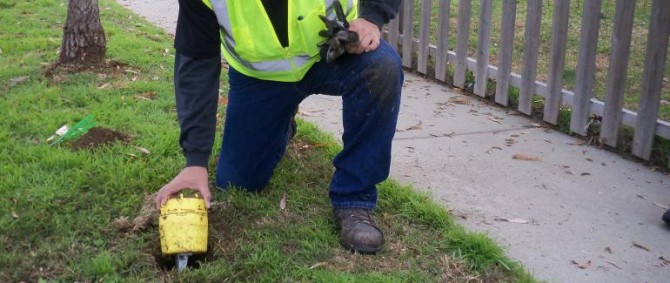A vibroseis truck similar to this one will be on campus beginning Sept. 21 to perform a seismic survey on campus and in the towns of Ithaca and Dryden, as part of Cornell's plans to implement Earth Source Heat.
Cornell to conduct Earth Source Heat seismic survey Sept. 21-25
By Tom Fleischman
Cornell is taking the next step in pursuit of eliminating its carbon footprint over the next two decades.
From Sept. 21-25, faculty and students from Cornell Engineering will be conducting geological characterization of rock formations under campus and adjacent land to establish baseline seismicity, as part of the university’s study of Earth Source Heat (ESH), a proposed enhanced geothermal system to heat the Ithaca campus.
As part of its goal of achieving carbon neutrality by 2035, Cornell is exploring ESH as a way to reduce its energy footprint – just as Lake Source Cooling eliminated the use of refrigerants to cool campus, reducing reliance on fossil fuels, keeping more than 10,000 metric tons of CO2 from entering the atmosphere annually, and cutting energy costs by 86 percent.
The seismicity project also will academically engage students on campus and at two local high schools.
For the next phase of ESH research, Cornell will deploy a mobile acoustic energy source vehicle to locations on campus and in the towns of Ithaca and Dryden for seismic vibration (or “vibroseis”) surveying. A vibrating pad will apply low-frequency signals to the ground for several seconds at regular stops along the route.
The vibroseis truck – known as T-Rex – will arrive at Cornell Sept. 20 and spend approximately four days surveying land under Game Farm Road (north and south from Dryden Road to Ellis Hollow Road) and Stevenson Road (east and west from Game Farm Road to Turkey Hill Road). The truck will also survey on the access road to the Cornell Teaching Dairy Barn; the road runs east and west off of Game Farm Road, which also serves as the Ithaca-Dryden town line.
The surveying is to determine the site of a future test well, which will be used to further feasibility studies of ESH. While Cornell is only considering university-owned land for a potential project site, it is surveying neighboring towns’ land as it is necessary to create a wide grid for testing to provide adequate imaging of existing rock formations.
The rock’s reaction to the vibration will be recorded by approximately 400 geophones, or nodes, to be set up along the survey route from Sept. 16-19. The nodes will record the acoustic reflections from rock formations hundreds of feet below the surface, allowing researchers to infer critical details about subsurface conditions.
Computer processing can then use these recordings of reflected sound waves to make a picture of the subsurface. These images can reveal the geometry of the various rock layers, changes in their physical properties and whether they are disrupted by geological faults.
“It’s very similar to sonar in water,” said Larry Brown, the Sidney Kaufman Professor in Geophysics in the Department of Earth and Atmospheric Sciences. “Such information is critical to decisions about where and how to drill through these rocks, for any purpose.”
Developed in the 1950s, vibroseis was designed to replace dangerous ways of producing ground vibrations, such as dynamite. Since the strength and frequency of the vibrations can be controlled, researchers will be able to tune T-Rex to avoid negative impacts to road surfaces or nearby structures and underground utilities.
“There is generally no danger to anyone passing near the operations,” said Brown, noting that he has taken part in hundreds of such surveys and has even stood on the baseplate of a similar machine as it shook the ground.
“We will have flaggers during operations on public roads to ensure that normal traffic is minimally disrupted during the operations,” he said.
The mobile acoustic energy source vehicle will come from the University of Texas’ Natural Hazards Engineering Research Infrastructure.
There will be an educational outreach component to this phase of ESH study: Ground motion sensors will be placed on the Cornell campus as well as at Ithaca and Dryden high schools. The T-Rex truck is also scheduled to visit the two high schools Sept. 28, Brown said.
Signals from the truck’s vibrations – as well as signals from any earthquake around the world – will be picked up by these sensors and can be used by students to study any tectonic activity they indicate.
An informational video and FAQ (“Exploring ESH”) are available at earthsourceheat.cornell.edu.
Media Contact
Get Cornell news delivered right to your inbox.
Subscribe



